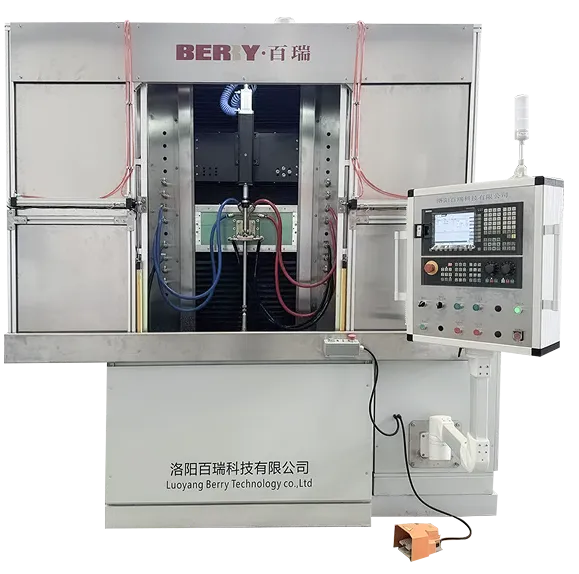
Automated Feeding: Parts are loaded via robots, conveyors, or vibratory feeders.Precision Fixturing: CNC-controlled clamps or chucks position the part accurately for hardening.Barcode/RFID Tracking: Ensures correct process parameters for each part type.
High-Frequency Power Supply (3–400 kHz) delivers controlled energy to the induction coil.Coil Design: Custom-shaped copper coils (single-turn, multi-turn, or scanner-type) heat specific zones (e.g., gear teeth, bearing races).Skin Effect Heating: The part surface reaches austenitizing temperature (750–1000°C) in 2–10 seconds.Temperature Monitoring: Infrared pyrometers ensure consistent heating before quenching.
Integrated Quench System activates within <1 second after heating:Spray Quenching: High-pressure nozzles apply water, polymer, or oil.Immersion Quenching: Parts are lowered into a quench tank (for large components).Quench Delay Control: Critical for preventing soft spots or cracking.
Induction or Convection Tempering reduces brittleness while retaining hardness.Low-Temperature Heating (~150–400°C) followed by air cooling.
Robotic Unloading: Hardened parts are transferred to cooling racks or packaging.Automated Quality Checks:Hardness Testing (Rockwell, Brinell).Dimensional Verification (laser scanners, CMM).Crack Detection (magnetic particle or ultrasonic testing).
PLC/HMI System records:Heating time, temperature, power.Quench flow rate, cooling time.Hardness results for traceability.Industry 4.0 Integration: Connects to MES/ERP for real-time analytics.